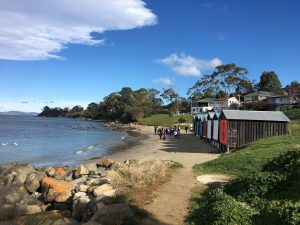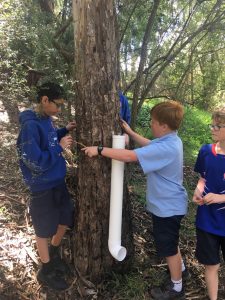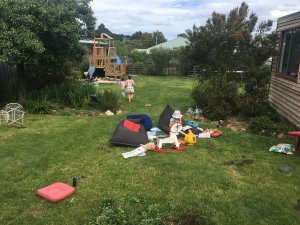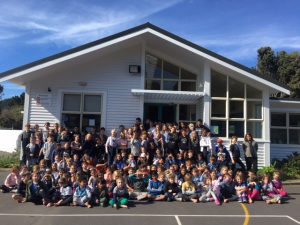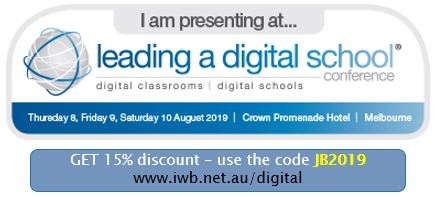In 2018 my class was lucky to be a part of a Channel Nine article showcasing the New Minecraft EDU platform for schools in SA. What a wonderful experience it was. 2 hrs with a full bustling computer room, several students chosen to speak, official department spokespeople present and everyone ready to get the main sales pitch across.
It was a great lesson for all. The 2 hour session was edited down to about 2 minutes but all kids that were prepped, spoke on the article and I managed to make myself look slightly better than ordinary. It amazed me how little the department and Nine News actually cared about talking about the cross curricular units of work and the ways in which the students were being submersed in a virtual world. Actually, I had just taken part in an advertisement.
The next day, everyone was happy, parents were proud, kids were walking tall and teachers commented over the morning break. The clip was being watched by a lot of people and my students were telling me everytime we passed another 1000 hits. As we hit 15000, I smiled and decided to have a look at how it was being accessed. Unfortunately, my innocent interest turned to intrigue when I noticed the 100+ comments posted…
….and then that intrigue quickly turned to frustration!
comments like:
Sarah J – ‘Yep see how this will educate our youth who are already lazy and rude!’
Carmen F – ‘Whatever happened to teamwork out on the play field or with a board game?’
Brett L – ‘So we’re paying school fees for our kids to play games and teachers want a pay rise ha ha they must think all parents are stupid.’
Tom H – ‘Haha team work isn’t really teamwork when one person has headphones on!’
Why is it that these people presumed that the use of a digital sandbox platform meant that we were decreasing the learning possibilities? Why did they react with such negative force? What was the cause of people feeling they needed to comment in such a way as though my teaching was merely putting a child on a game?
I began to really question my practice and approach to all the digital resources at hand and think more about this. Was I using Minecraft as an educational tool or was it merely a new age colouring in book.
This was late in the year and our major unit was wrapping up. The students were now functioning in their virtual class city (Shichi Hachi Muchi – Room 7 & 8). We had turned the creative mode off several weeks before because the students had developed their businesses based upon requests submitted that demonstrated a clear understanding of the supply and demand needs of the city.
The journey on this unit had students using digital technologies for design, collaboration, communication and data. It enabled the students to lead and look after real world issues in a virtual setting for Civics and Citizenship. The students maintained a personal budget that also assisted students to monitor their learning progress and personal goals. It crossed 6 curriculum areas and had a 100% finish rate for the unit.
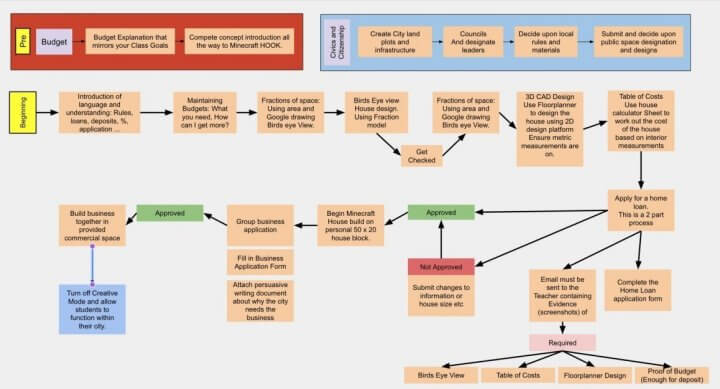
I have since continued to improve the unit of work, with incentives for extra work, and self monitoring being two large changes. In 2019 we are completely using Minecraft EDU, and my Minecraft minions have been working really hard to get our new and improved future city ready for the first home owner.
The experience has made me realise that there are many people that will try to look for fault in everything we do and that we must continue to work hard to use technologies where they can enhance learning. People will use technologies as the new age colouring book but I am not one of them. I want more, and simulations, virtual worlds, transparent templates, cloud sharing and so many other technologies are making my classroom an amazing place to be.
If you want to know more about my units of work and approach to teaching with digital technologies, please join me at the Leading a Digital School Conference at Crown Melbourne in August where I will be running two workshops; Minecraft across the Curriculum and Make Learning Real.
Steve Whitehead
IT Coordinator
